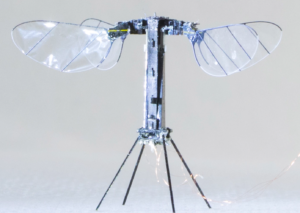New battery technology breakthrough shocks the tech world – longer-lasting devices are now a reality in the USA, paving the way for mobile electronics, electric vehicles, and green energy systems that last significantly longer and charge faster.
How This Battery Breakthrough Impacts the Future
+-----------------------------+
| Battery Technology Breakthrough |
+-----------------------------+
|
+----------------------------+---------------------------+
| | |
+------------+ +----------------+ +----------------------+
| Graphene Tech | | Solid-State Cells | | Longer Device Life |
+------------+ +----------------+ +----------------------+
| | |
- Prevents overheating - Improves safety - 3X more charge time
- Boosts conductivity - Compact design - 800+ mile EV range
- Extends cycle life - Faster recharge - Lower replacement needs
New Battery Technology, A Groundbreaking Leap in Power Storage
For decades, lithium-ion batteries have powered everything from iPhones to Teslas. But they come with drawbacks: short lifespan, overheating risks, and environmental concerns. This new breakthrough, developed by U.S. researchers at Caltech and commercial labs, replaces outdated elements with graphene-enhanced materials and solid-state architecture — solving nearly every key flaw.
- Graphene coatings reduce wear & overheating
- Solid electrolytes replace flammable liquids
- 60% more energy per battery unit
- Lifespan increased to 500–1,000+ full charge cycles
Key Components That Power the Revolution
| Component | Traditional Lithium-Ion | Graphene Solid-State Battery |
|---|---|---|
| Energy Density | 150–250 Wh/kg | Up to 350 Wh/kg |
| Charge Time | 1–2 hours | Under 30 minutes |
| Lifespan | ~500 cycles | 800–1,200+ cycles |
| Fire Risk | Moderate (flammable electrolyte) | Minimal (solid-state safe) |
| Operating Temperature | 0–45°C | -20 to 60°C |
How Graphene and Solid-State Tech Work Together
Graphene, a super-thin carbon material, is incredibly strong and conductive. When applied as a layer over battery cathodes:
- It reduces chemical breakdown
- Enhances current flow
- Keeps the battery cool even during rapid charging
Solid-state design replaces liquid electrolytes with solid materials, increasing safety, shrinking size, and allowing for more power-packed into a smaller unit.
Why the USA Is Leading This Battery Revolution
The U.S. government has pumped $3.1 billion into battery innovation through the Department of Energy to support energy independence and sustainability. Major companies like Tesla, Ford, GM, and startups like QuantumScape are racing to bring these batteries to market — aiming for mass rollout by 2026.
- Tesla aims for 1 million EVs with solid-state batteries by 2027
- EV range target: Over 800 miles per charge
- Consumer electronics: Expected battery life boost of 250%
Powering the Future Starts Now
With graphene and solid-state technologies, we’re not just extending battery life — we’re rewriting the future of power. These innovations mean:
- Fewer charges = more productivity
- Eco-friendlier devices = better sustainability
- High performance = real value for USA consumers
The next wave of smartphones, electric vehicles, and even military-grade tech will likely rely on these breakthroughs. For U.S. consumers, this means faster, safer, and more reliable devices at the heart of everyday life.
[USnewsSphere.com / cal]





